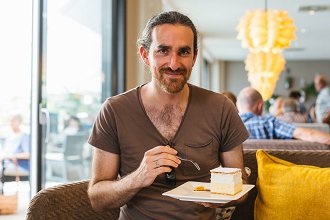Bled is a Jewel of Sustainable Tourism
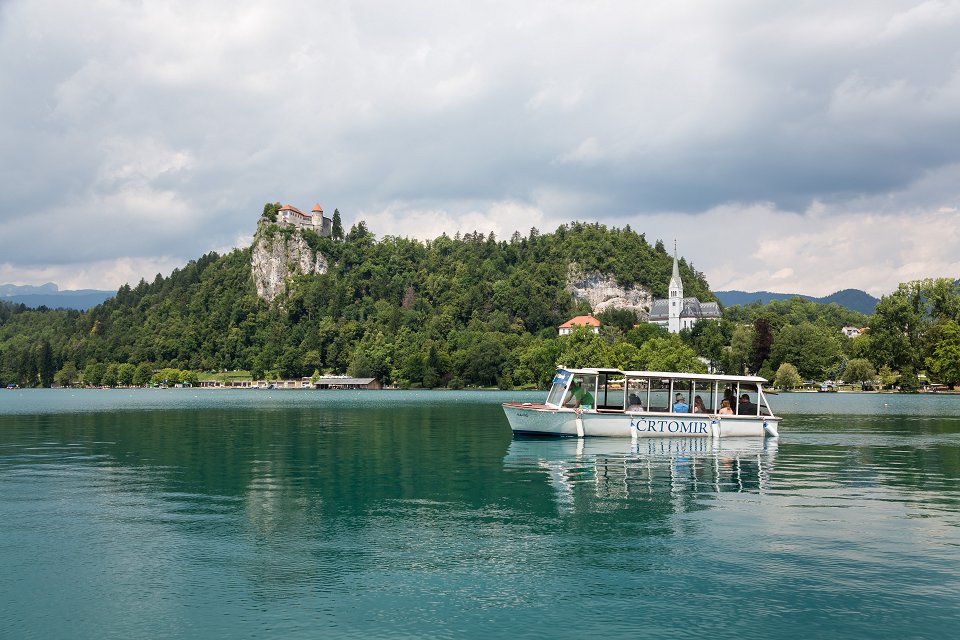
Lake Bled boating regulation permits only fuel free watercrafts in order to maintain a tranquil water traffic atmosphere.
You’ve got a “bucket list” of experience you’d like to enjoy before you, well, kick the bucket. You plan to hike the Himalayas, play golf on Saharan sand dunes, wrestle an alligator in Louisiana and row a boat on Lake Bled. But you’re also concerned about the carbon footprint you leave behind in flying from home to the Himalayas, Sahara, Louisiana and Slovenia. You’re an upright global citizen who recycles and drives a hybrid and turns off lights when you leave a room. So, how can you go on a “carbon diet” to trim away the things you need to do, but that aren’t so good for the environment? There’s a surprising amount you can do without negatively impacting your lifestyle and desires. Choosing to visit Bled (between your golf and alligator wrestling holidays) is a great step in the right direction.
You’re likely aware that Bled is one of the most beautiful places on Planet Earth, but it’s also a place that you can visit with a clean conscience. Because Bled is one of the greenest tourist destination in Europe, a paragon of sustainable tourism. In order to travel sustainably, there are two things to keep in mind: whether your intended destination is doing its part to be green (and is therefore deserving of your visit, as a conscientious traveler), and what you can do while traveling to and staying in the location to ease your personal carbon footprint.
Bled is taking care of its side of the coin. As Romana Purkart, the “Green Coordinator” for the Bled Tourist Board, tells me with delight and rightful pride, Bled was named the “2ndBest in Europe” in 2019 for its sustainability, as part of the Green Destinations project run by a Dutch NGO. Its place in the Sustainability Top 100 in the World was already secured, but it was a jewel in the crown to be considered the 2nd best tourist location in Europe, in terms of long-term environmentally-friend sustainability. It has been a member of the Alpine Pearls group, of tourist destinations throughout the Alps that strive to leave as little a carbon footprint as possible. This is a la mode today but Bled has been a member, hard at work in this direction, since 2011.
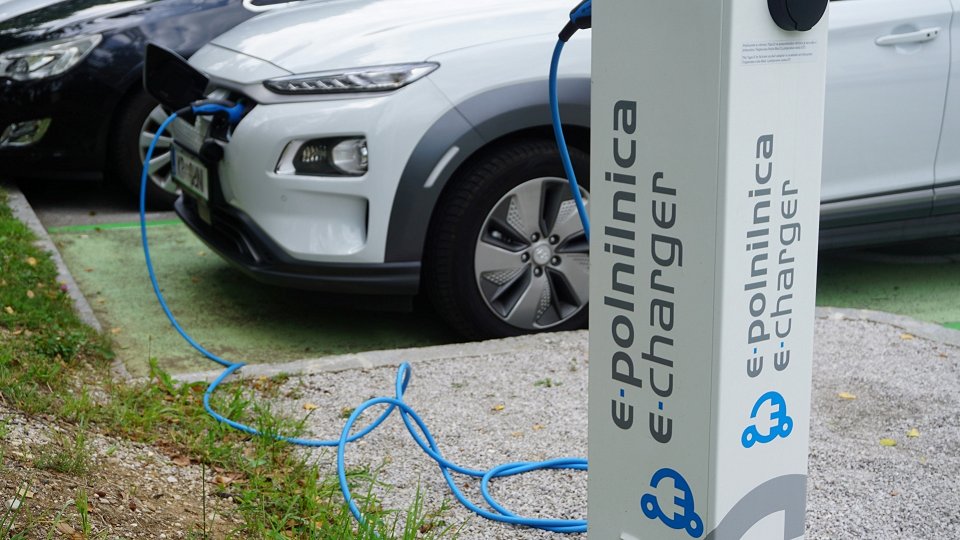 © Maja Pančur
© Maja Pančur
Bled is outfitted with 38 electric car filling stations, or one for every 268 residents, which is among the most per capita in the world.
What does this mean in practice? It’s one thing to have one of the world’s loveliest locations which, of course, millions of people want to visit. But sustainable tourism is about developing and maintaining both the local economy and the environment in a way that will function, happily and cleanly, long-term. This begins with recognizing the need for such a program. The very fact that Bled Tourism employs someone with the title “Green Coordinator«, is already a good sign. They are aware that tourists must be happy, but locals, too, and Romana explains that, with any new initiative, they first look at whether it’s good for locals, and only then if it helps improve the experience for guests. Happy tourist destinations are those for which the locals are happy to host tourists. If they feel overwhelmed, or that the tourist’s requirements take precedent over theirs, then it’s not a setup for success. Bled has this covered. When the Green Destinations organization considers localities,environmental issues are just one component. They also consider rights for locals, support of local employment (rather than outsourcing), fair trade products and foods, and more. .
Bled is outfitted with 38 electric car filling stations, or one for every 268 residents, which is among the most per capita in the world (to put this into perspective, the US city of San Francisco, one of the most progressive in terms of e-travel, has 605 charging stations for a population of around 864,000, or 1 station for every 1428 or so citizens). Bike sharing is, of course, a great option, and the ability to walk just about anywhere is the greenest. kartico The Julian Alps Card: Bled encourages soft transport. All guests accommodated at Bled Tourist Board partner services providers in Bled, between June 15 and September 15 and for at least three nights, receive a free card which grants unlimited travel on local tourist buses, including those which feature guided tours, free mountain bike rentals, and free use of the ski lifts around the lake to reach viewpoints. Bled even offers glass water bottles, with numerous drinking fountains around the municipality, where you can top them up without using one bit of plastic.
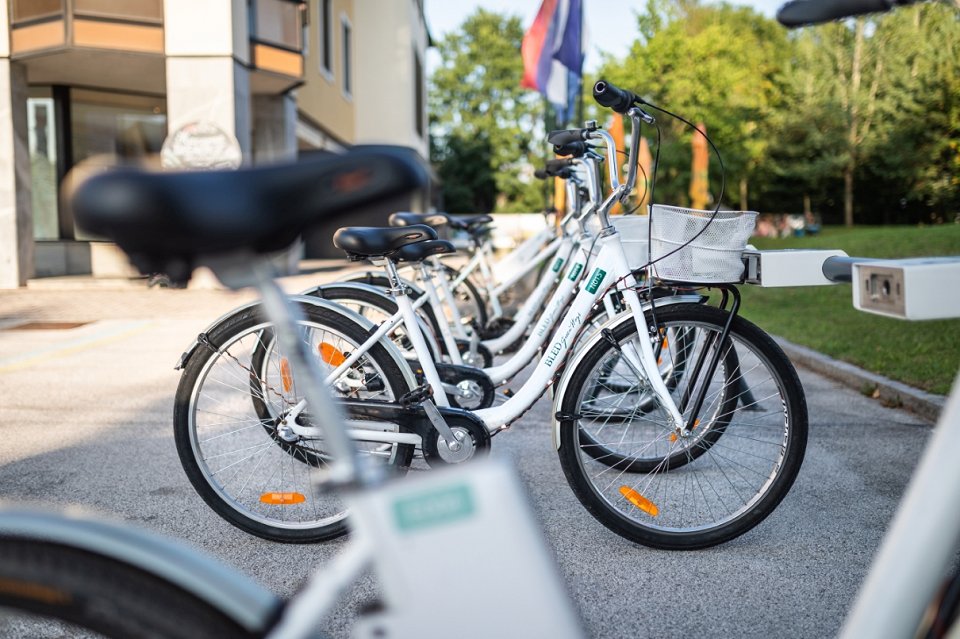 © Jošt Gantar
© Jošt Gantar
Bled Municipality has set a bike sharing system in 2017 to incourage sustainable mobility.
If all this were not enough, the township has dedicated a quarter-million euros to further improving their Green Destination rating, so they look certain to move even higher up the list in the near future.
This means that Bled is an ideal tourist destination for the conscientious traveler, for the person who wants to see the greatest sites of our planet but wants to do so in a sustainable way.
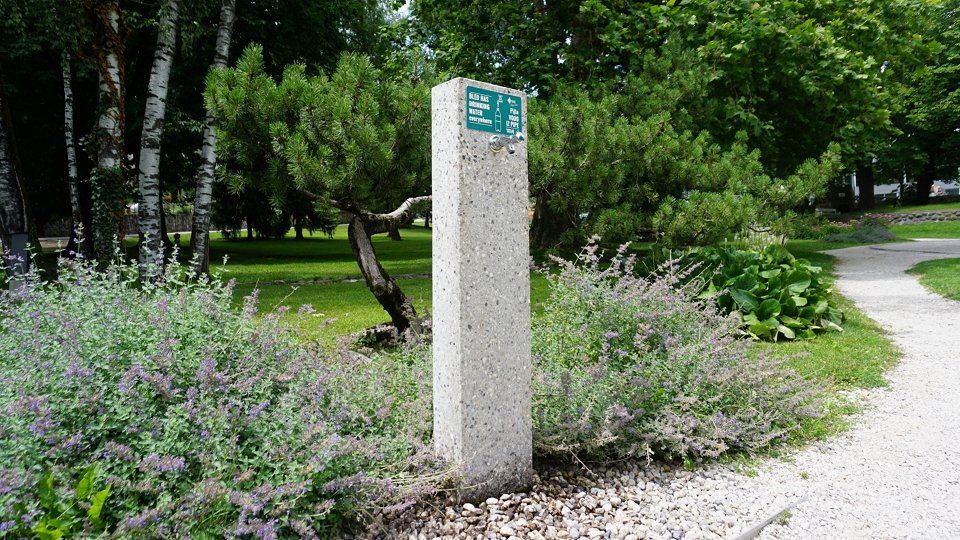 © Maja Pančur
© Maja Pančur
Bled has drinking water everywhere. Public drinking fountains are set on practically every step.
While you are in Bled, there is a lot that you can do to partner with the town’s efforts and team up to reduce your carbon footprint. even more. First off, use all the means of transport available that do not involve fuel: e-bikes, e-cars, horse carriage, Pletna boats and motorless boats to cruise the lake. Go on foot whenever possible (or jog, to work off all those Cream Cakes you’ll surely be eating). Stay in hotels or resorts that strive for zero waste , like Garden Village Glamping Resort and Camping Bled or the hotels Savica Garni, Astoria and Vila Mila, all of which carry the EU Ecolabel for ecological sensitivity. You might even consider Hotel Ribno, which is the first and only totally zero waste hotel in Slovenia.
And when you come to Bled, stay for as long as you can. Limiting long-distance travel, particularly by airplane, is the best way to reduce carbon footprints while still seeing the world—and there’s so much to explore here.
About author
Dr. Noah Charney is a best-selling American author and professor of art history, living for many years in Slovenia. He grew up in New Haven, in the USA, and did his postgraduate studies at The Courtauld Institute, University of Cambridge and University of Ljubljana. He is the author of 13 books, including several international best-sellers, including Slovenology: Living and Traveling in the World's Best Country, a book of essays about his adventures living in Slovenia, which he calls “the world’s best country,” which sold over 3000 copies in the first six months. His Eternal Architect: The Life and Art of Joze Plecnik, Modernist Mystic, came in second for the Slovenian Book Award and won Best Book at the Novi Sad Architecture Biennial. While he is a specialist in art history and art crime, he has become a specialist in Slovenia, writing about it frequently for major publications, like The Guardian and the Washington Post. Learn more about his work at noahcharney.com or join him on social media, where he reports on his adventures in "the world's best country.".

